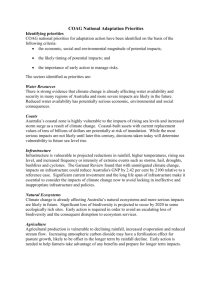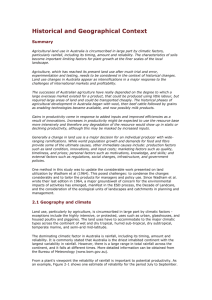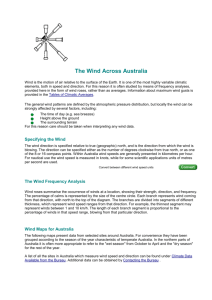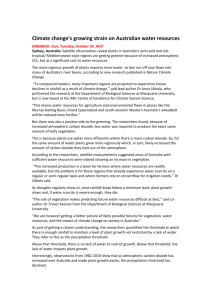Marine Studies_files\climatology
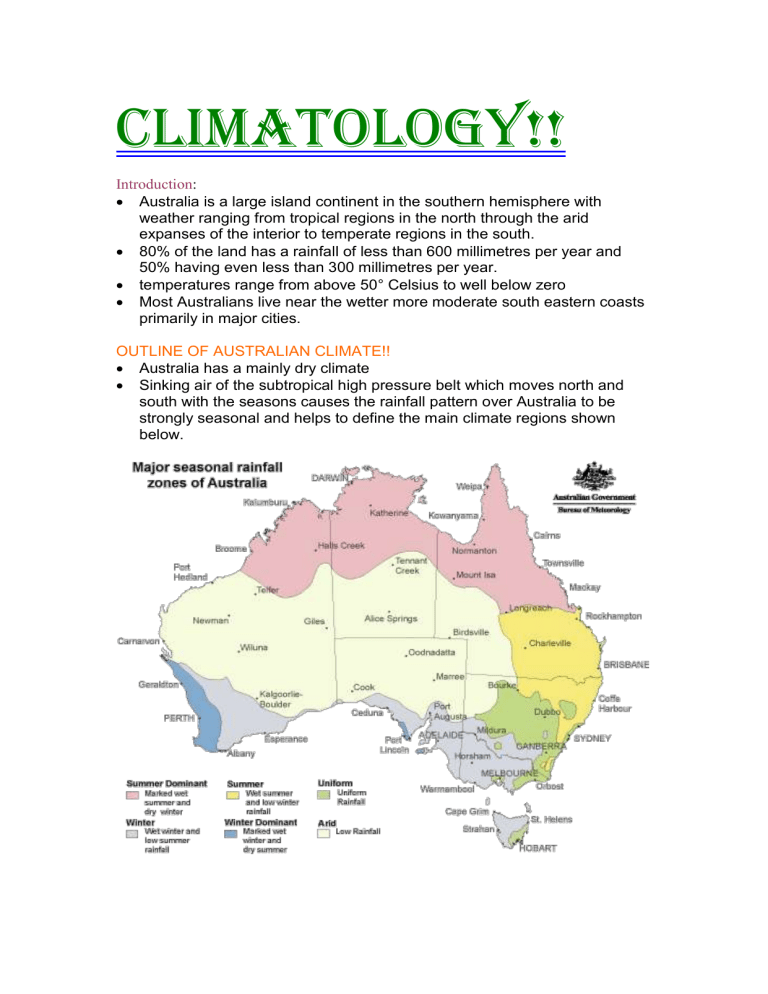
CLIMATOLOGY!!
Introduction :
Australia is a large island continent in the southern hemisphere with weather ranging from tropical regions in the north through the arid expanses of the interior to temperate regions in the south.
80% of the land has a rainfall of less than 600 millimetres per year and
50% having even less than 300 millimetres per year.
temperatures range from above 50 ° Celsius to well below zero
Most Australians live near the wetter more moderate south eastern coasts primarily in major cities.
OUTLINE OF AUSTRALIAN CLIMATE!!
Australia has a mainly dry climate
Sinking air of the subtropical high pressure belt which moves north and south with the seasons causes the rainfall pattern over Australia to be strongly seasonal and helps to define the main climate regions shown below.
During winter, southern Australia comes under the influence of westerly winds and rain-bearing cold fronts because the high pressure systems move north.
Cold snaps may lead to frosts inland, though temperatures about the coast are generally mild all year round.
Most of Australia's primary production occurs in the temperate regions of the south and east, and relies on this winter rainfall.
Summers over southern Australia are mostly dry and hot with coastal seabreezes. Following a long dry spell, hot, dry winds from the interior can cause bushfires in southern and eastern Australia. The flammability of the
Australian bush adds to the risk.
In comparison, tropical regions of northern Australia experience a wet summer as the monsoon moves in.
During “the wet”, typically October to April, moist north-westerly winds bring humid conditions with showers and thunderstorms
Once the monsoon has retreated, winter brings blue skies and mild, dry conditions.
Australia compared to other continents:
Australia has the lowest rainfall of the five continents (not including
Antarctica).
The graph opposite shows that discharge of Australia's rivers into the sea is by far the lowest of any of the continents
Low and seasonal flows contribute to problems of salinity and algal blooms.
Australia is one of the most affected continents, experiencing major droughts interspersed with extensive wet periods.
Frequencies of tropical cyclones, heat-waves, bushfires and frosts are also linked to the Southern
Oscillation.
Our plants and animals have evolved on a geographically isolated continent, through a time of a slowly drying climate. The uniqueness of much of Australia's flora and fauna is due to these features of our climate.
Climate variability (from year-to-year and from decade-to-decade), affects environmental management issues, particularly if combined with potential climate change, (slower and on a longer time-scale).
CLIMATE AVERAGE
WOLLONGONG:


